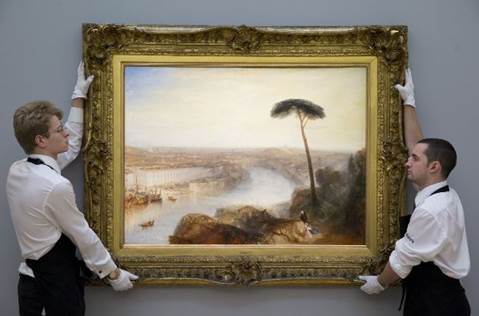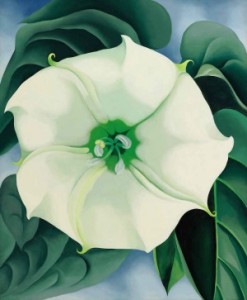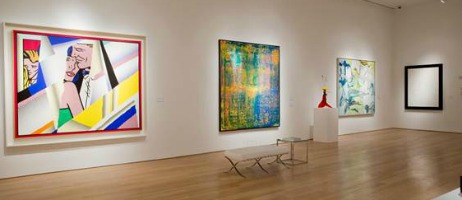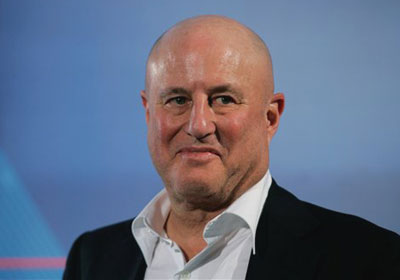While much of the art world was in Miami Beach last Wednesday, Sotheby’s in London sold a J.M.W. Turner for a record $47. 4 million, or £30.3 million, including the premium, against a presale estimate of $24.1- to $32.1 million. That’s huge!
 Turner, whose biopic Mr. Turner opens in the United States on Dec. 19, painted the work, Rome, from Mount Aventine, in 1835, and exhibited it the following year at the Royal Academy.
Turner, whose biopic Mr. Turner opens in the United States on Dec. 19, painted the work, Rome, from Mount Aventine, in 1835, and exhibited it the following year at the Royal Academy.
Four bidders wanted to picture, Sotheby’s said, mentioned that the sale “coincided with a wider moment of Turner mania, with the groundbreaking exhibition of Late Turner at the Tate and Mike Leigh’s sensational Mr Turner.” The auction house might also have mentioned the Turner & the Sea exhibit, which was organized by the National Maritime Museum in Greenwich last year, and also shown at the Peabody Essex Museum in Salem.
It must have helped that the work had only changed hands once before, in 1978, when the Earl of Rosebery, later Prime Minister, bought it and in whose collecetion he has remained ever since. It has never been restored or relined. That, plus the fact that it was one of the few major Turners in private hands increased the competition. That price is also the highest for any pre-20th century British artist ever sold at auction, according to Sotheby’s.
The previous record for a Turner was set in 2010, when the Getty Museum bought his Modern Rome–Campo Vaccino for £29.7 million, ot $44.9 million.
Still, Turner is not universally admired, and the enthusiasm for the category extended past the Turner.
Here’s a passage from the press release announcing the record:
Alex Bell, Joint International Head and Co-Chairman of Sotheby’s Old Master Paintings Department said: “…Turner is a revolutionary artist who transformed the way we experience painting, and Rome, from Mount Aventine is one of his greatest achievements. The landmark price the work achieved tonight was driven not only by its exceptional provenance and condition but also by the fact that it was one of the last great masterpieces by the artist left in private hands. Following this summer’s record evening sale, tonight’s auction is a further indication of the growing strength of the Old Master market. Where there is quality there are buyers, and we are seeing a huge influx of interest, most notably from new entrants into the field who this year accounted for 40% of our buyers.
Boldface mine. Also, 84% of the lots were sold, following a 81% sell-through rate last July. Some 64% of works sold in this Old Master and British pictures sale  sold for prices above their high estimate.
Sotheby’s did not, of course, say who the new buyers are. Could it be possible that some collectors are tiring of the outsized prices in contemporary art and are looking for better values? Have they paid attention to Leonard Lauder, who has said loud and clear that he started collecting Cubist works when everyon else was focused on Impressionism?
I actually hope so.
Photo Credit: Courtesy of Sotheby’s




